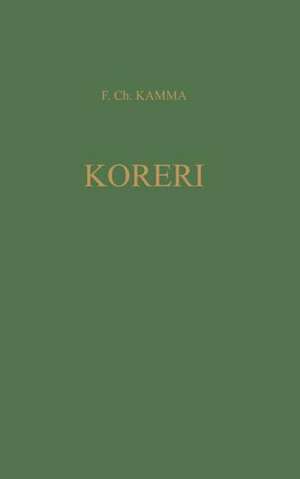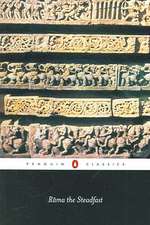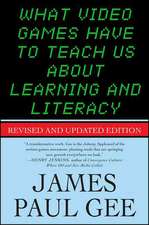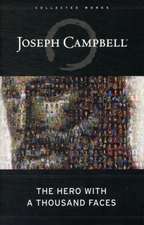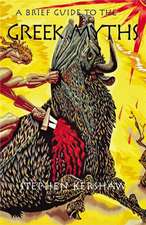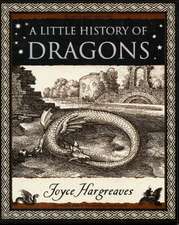Koreri Messianic Movements in the Biak-Numfor Culture Area: Koninklijk Instituut Voor Taal-, Land-, En Volkenkunde Translation Series 15
Autor Freerk Ch. Kamma Editat de M.J. Vatherst-Smit, W.E. Haver Droeze-Hulswiten Limba Engleză Paperback – 1972
Preț: 643.16 lei
Preț vechi: 756.65 lei
-15% Nou
Puncte Express: 965
Preț estimativ în valută:
123.08€ • 133.65$ • 103.39£
123.08€ • 133.65$ • 103.39£
Carte tipărită la comandă
Livrare economică 22 aprilie-06 mai
Preluare comenzi: 021 569.72.76
Specificații
ISBN-13: 9789401502306
ISBN-10: 9401502307
Pagini: 352
Ilustrații: XII, 328 p.
Dimensiuni: 155 x 235 x 18 mm
Greutate: 0.49 kg
Ediția:Softcover reprint of the original 1st ed. 1972
Editura: SPRINGER NETHERLANDS
Colecția Springer
Locul publicării:Dordrecht, Netherlands
ISBN-10: 9401502307
Pagini: 352
Ilustrații: XII, 328 p.
Dimensiuni: 155 x 235 x 18 mm
Greutate: 0.49 kg
Ediția:Softcover reprint of the original 1st ed. 1972
Editura: SPRINGER NETHERLANDS
Colecția Springer
Locul publicării:Dordrecht, Netherlands
Public țintă
ResearchCuprins
I. The Setting.- a. Geographical and historical background.- b. Plans of houses and villages.- c. Social organization.- d. Religion.- II. The Myth of Manarmakeri.- Names.- Prehistory.- Genealogy of Manarmakeri.- On the heights of Yamnaibori.- Prologue.- The Myth.- a. Introduction.- b. The story.- III. The Return of Manseren Manggundi and the Conclusion of the Myth.- a. The return.- b. The conclusion of the myth.- IV. The Meaning of the Differences in the Variants of the Myth.- The poetical text of the myth.- The Song (Beyuser) of Manarmakdi.- (a. Introduction).- (b. The song (monologue of the Old Man)).- (c. Intermezzo).- (d. Continuing the narrative).- V. The Connection with Biak Mythology.- 1. The disguised figures, rejected or accepted.- 2. The contact with the ancestors and the land of souls.- 3. The meaning of the coconut palm.- 4. The voyage from west to east, and the role of the generation groups.- 5. The moon, the sun, and the Morning Star.- 6. The animals in the myths.- 7. Acts of creation by the principal personages in the myths.- 8. The function of the clan sanctuary as the center of mythical power and the moveability of this center.- VI. The Advent Nights.- VII. History of the Movements 1855–1967.- The Movements.- Japen and Kurudu.- The Radja Ampat area.- Koreri movements after World War II.- VIII. The Movements of 1938–1943 in Biak, Numfor and Japen.- 1. The beginning of the Movement in Supiori.- 2. 1942, the New Leader, Stephanus Simopyaref.- 3. Considerations.- 4. Further Developments.- 5. The Development in Numfor.- 6. Different Trends within — and in connection with — the Movement.- 7. Reorganization after the Imprisonment of Stephanus Ronsumbre.- 8. Stephen Wanda in Numfor.- 9. Birmori (Korinus) Sasiaber or Bosren.- 10. Chronological Outline ofthe Events after November 1942.- 11. Koreri Symbolism in Numfor (c. 1943–44).- 12. The Great Movement in Japen.- 13. The Final Phase of the Great Movement.- IX. The Historical Factors and the Influence of the Contact-Situations on the Movements.- 1. Mutual rivalry.- 2. The raids.- 3. The Subjection to Tidore.- 4. Contacts with Europeans.- 5. The Mission.- 6. The Government.- 7. Attitude towards strangers.- 8. The Problem of Acculturation in the Geelvink Bay.- X. Closing Remarks on the Movements as a Problem.- 1. The Position of the Problem (in general).- 2. Supplement.- 3. Missionary views of the Movements.- 4. The Manseren Movements of Biak.- XI. Summary and Conclusion.- Summary.- Conclusion.- Appendix: Similar Movements in other parts of West New Guinea (West Irian).- List of Abbreviations.- General Index.- Photographs Frontispiece.- 1. Rodjau Obinaru with shield.- 2. Konoor Warbesren Rumbewas.- 3. Pamai Jacadewa.- Maps At the back of the book.- I. Indicating Koreri Movements.- II. Indicating Similar Movements.
